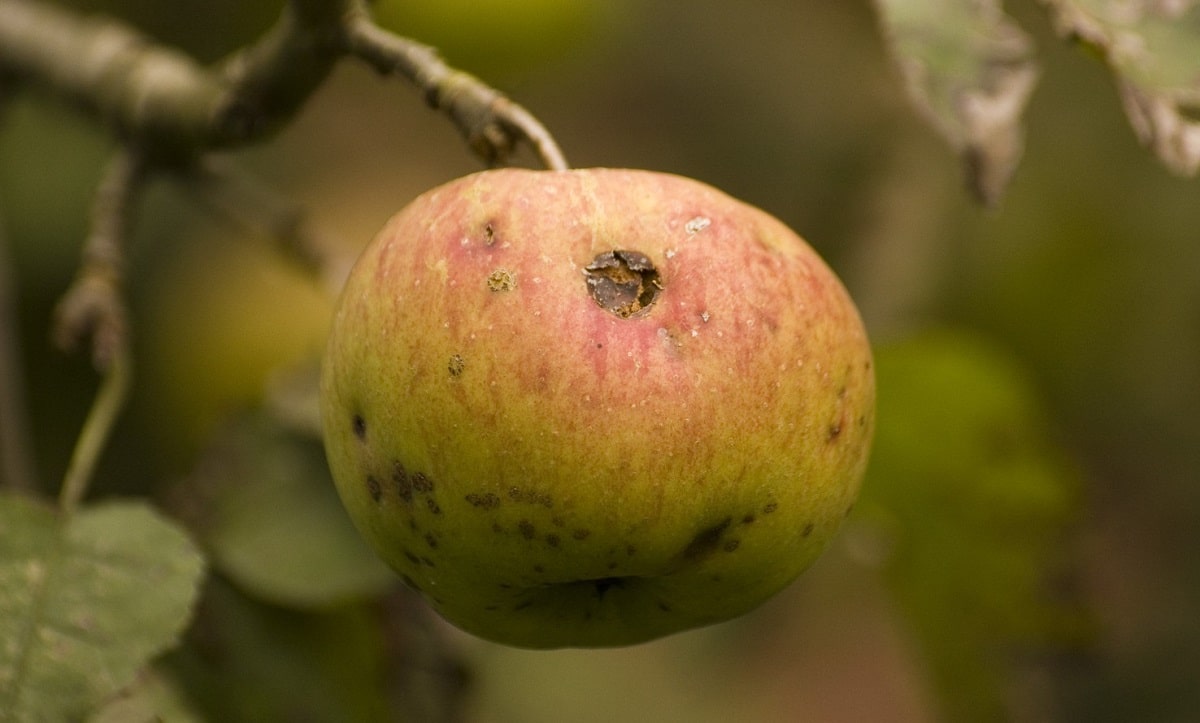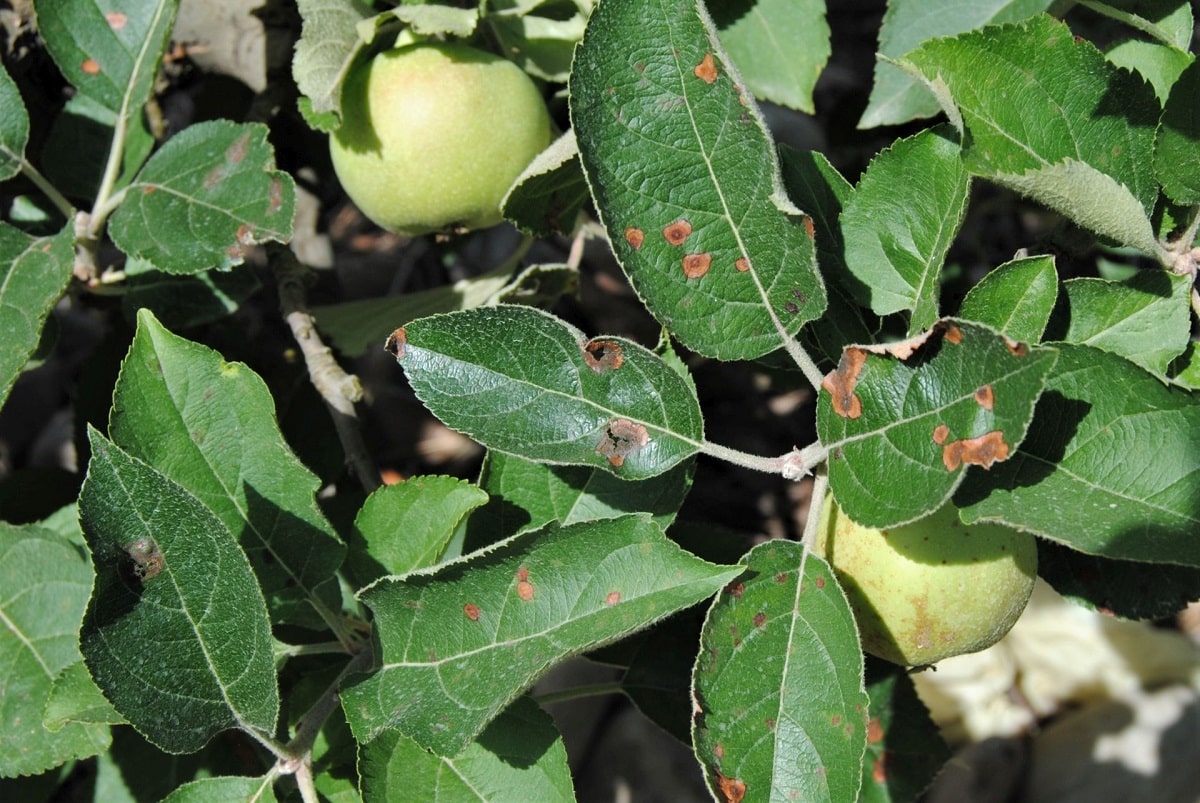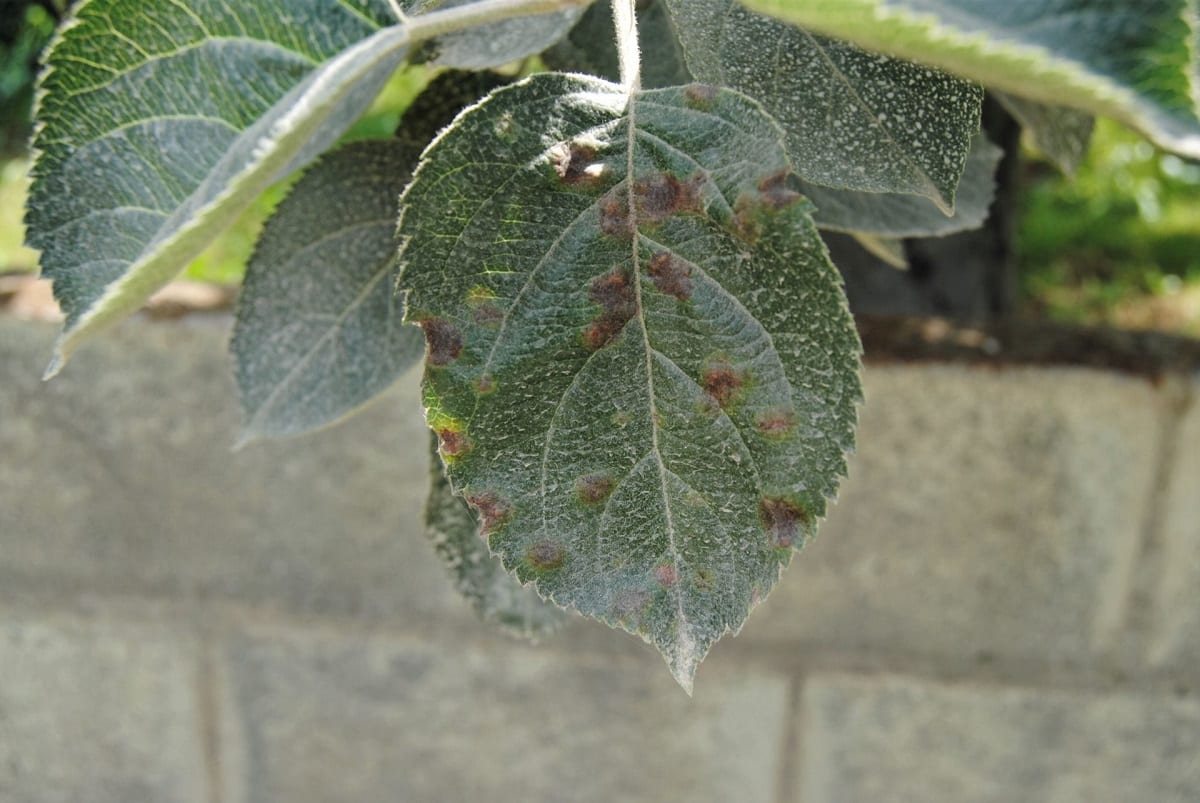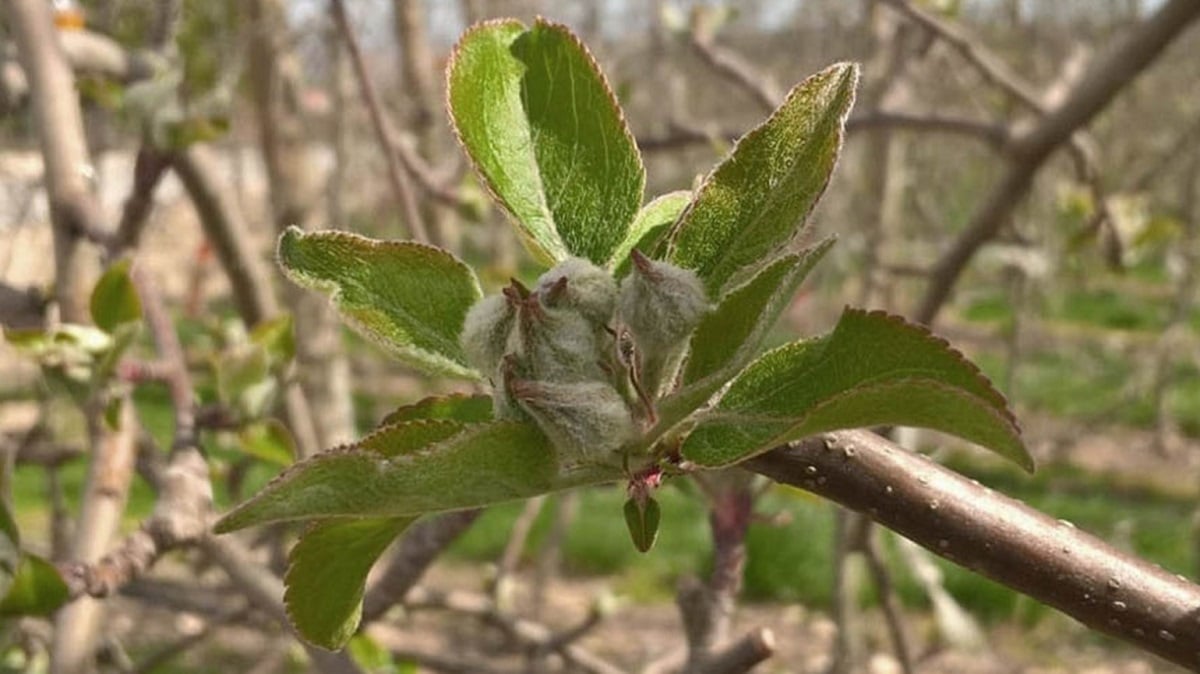
The apple tree is a widespread crop that is also vulnerable to certain diseases and pests. One of the most common is the apple tree mottle. It is a fungal disease that can seriously affect both the tree and the fruits.
In this article we are going to tell you what the apple tree mottle is, what are its characteristics, symptoms and treatments.
What is apple mottle

Apple mottle is the most important fungal disease caused by the fungus venturia inaequalis which affects the production of all apple tree varieties.
Its appearance occurs at the end of the season, greatly influenced by the spring weather and the rains. Therefore, a humid climate with wet leaves and fruits favors its development in the early stages of the vegetative cycle.
The leaves that fall to the ground are attacked by the fungus between September and November and survive these months. Later, in spring, when the fungus resumes its growth and begins to produce ascospores, the ascospores are dispersed by the action of the wind and reach the leaves and fruits, infecting them again.
For all these processes, precipitation and a certain temperature are necessary. The optimum temperature for ascospores is 20ºC. For germination they are shaken between 15 and 22ºC, as long as the humidity in the leaves lasts between three and four hours. The incubation period of the disease is 17-18 days at temperatures of 8-10ºC. and 8-14 days at temperatures of 20-25ºC. Also, the minimum RH required is 80-100%.
It has an incubation period of 9 to 18 days, with symptoms appearing later on leaves and fruits.
symptomatology

Venturia inaequalis can affect all the green organs of the plant, but its most visible symptoms, such as leaf spots and scabs, occur on leaves and fruit. In the case of leaves affected by Venturia sp., olive green spots develop first, followed by blackening underneath due to the production of conidia. If it is attacked multiple times, it can end the defoliation of the tree.
Although its action on the leaves can affect yield, the greatest damage occurs when it attacks the fruit. On the fruit, the resulting spots turn black as the spores form. If the disease occurs when the fruit is small, the affected part will stop growing and the fruit will crack, allowing the entry of other microorganisms, which favors dehydration. If this happens during fruit development, it can affect its aesthetic qualities, as well as its storage inside and, therefore, its profitability.
The blotch fungus overwinters as a mycelium on fallen leaves and in early spring forms small fruits called "peritecae" that contain the sexual seeds of the fungus, or "ascospores." These are expelled from the perithecas once ripe and are carried by the wind and rain on the leaves and flowers of the apple trees. They penetrate and therefore cause contamination or primary attack. After 1 or 2 weeks, depending on the temperature, the fungus produces asexual fruiting bodies called "conidia", that help spread the disease and create the so-called secondary attack.
Each spot can produce conidia for 4-6 weeks. Mild temperatures, abundant rainfall and high environmental humidity favor the evolution and propagation of disease spores or germs, characteristics that frequently occur in our climate.
Apple mottle control

It is important to have varieties of plants resistant to stains. Avoid planting in shady or excessively humid areas. It improves the aeration and light of the tree by performing correct pruning, thus, in addition to facilitating the penetration of phytosanitary products, it also shortens the drying time of the leaves and fruits. Keep the grass short and remove any leaves that have fallen to the ground in late fall.
Today effective spot control is done chemically to control primary infection and successive secondary infections. The primary inoculum comes from the ascospores, which are produced inside the wrapped shells that form on the leaves that fall to the ground in winter, so to reduce the severity of the primary infection it is necessary:
Minimize the formation of wrappers on the leaves in amount of soil; this can be achieved by picking them up from the ground or speeding up the decomposition process of the leaf litter by treating them with 5% urea when approximately 85% of the leaves fall.
Prevent the infectious vernal ascospores from infecting the receptor organs of the apple tree (leaves, flowers and fruits) since they are easily colonized by the fungus under constant humidity conditions for a few hours. The ascospores are not expelled abruptly, but rather undergo a gradual maturation process and are expelled from the envelope over 6-8 weeks.
Aspects to take into account the mottle of the apple tree
Under our conditions, the flight period of the ascospores is usually from the beginning of April to the end of May, depending on the weather conditions of the specific year. Good control of the primary infection is essential to minimize subsequent secondary infection. Tree protection should start from the moment the susceptible organs appear, therefore, in the absence of reporting stations for detailed monitoring of the disease, it is most practical to treat according to crop phenology. These are the most important moments:
- Protection from flowering to fruit set with systemic and/or penetrating fungicides.
- During the remainder of the cycle, when the necessary moisture conditions exist, a continuous secondary infection occurs.
Treatment should be carried out after the onset of infective conditions, taking into account the protection period of the previously applied fungicide. Most importantly, it is recommended to apply a contact fungicide within 24 hours. Apply a therapeutic antiseptic after an infectious condition occurs, or within 48 hours.
Before finishing the crop harvest, depending on the severity of the infection in the plot, treatment with a systemic fungicide may be an option to reduce future overwintering inoculations in the plantation.
I hope that with this information you can learn more about apple mottle and its treatment.